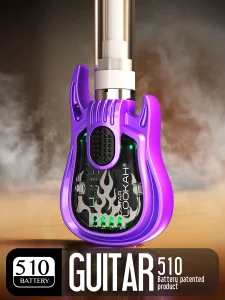Effective Thermal Management Materials: Boosting Heat Dissipation in Electronics
Understanding Thermal Management Materials
In the modern electronics landscape, effective heat management is a critical factor that directly influences performance, reliability, and longevity. This is where thermal management materials come into play, offering solutions tailored to dissipate heat efficiently and protect sensitive electronic components. By understanding the fundamental aspects of these materials, their importance in electronics, and their diverse applications, stakeholders can make informed decisions that enhance product performance.
What Are Thermal Management Materials?
Thermal management materials are specialized products designed to control and dissipate heat in various applications, predominantly in electronics. These materials are engineered to facilitate efficient heat transfer, thereby minimizing thermal resistance. This, in turn, protects sensitive components, enhances performance, and prolongs the lifespan of electronic devices.
Importance of Thermal Management in Electronics
The significance of thermal management in electronics cannot be overstated. As electronic devices become more compact and powerful, the heat generated by their components increases substantially. Excess heat can lead to component failure, reduced efficiency, and decreased reliability. Effective thermal management ensures that devices operate within safe temperature thresholds, thus safeguarding functionality and longevity. For manufacturers, efficient thermal management solutions can also translate to reduced costs and increased customer satisfaction due to enhanced product reliability.
Types of Thermal Management Materials
Thermal management materials encompass a variety of products, each serving specific functions and applications. Some of the most common types include:
- Thermal Interface Materials (TIMs): Used to enhance thermal transfer between components and heat sinks.
- Phase Change Materials (PCMs): These materials absorb and release heat during phase transitions, stabilizing temperatures.
- Thermal Pads: Soft, conformable materials that fill the gaps between components to improve heat transfer.
- Thermal Greases and Adhesives: They provide effective thermal conductivity while securing components together.
- Gap Fillers: Designed to fill spaces and enhance conductivity between surfaces with irregular shapes.
Key Properties of Thermal Management Materials
Thermal Conductivity Explained
Thermal conductivity is a measure of a material’s ability to conduct heat. It is a crucial property for thermal management materials because high thermal conductivity ensures efficient heat dissipation. The unit of measurement for thermal conductivity is Watts per meter-Kelvin (W/mK). Generally, materials with higher thermal conductivity values are preferred for effective thermal management.
Durability and Longevity
Beyond thermal performance, durability is essential for materials used in demanding environments. Thermal management materials must withstand extreme temperatures, mechanical stress, and potential chemical exposures without degrading. Longevity ensures that the material retains its thermal properties over time, contributing to the reliability of the electronic components it protects.
Compatibility with Electronic Components
Another vital aspect is the compatibility of thermal management materials with various electronic components. Factors such as chemical composition, physical characteristics, and thermal expansion rates must align with the materials being protected. Ensuring compatibility can prevent issues such as thermal mismatch, which may lead to stress and eventual failure of the components.
Applications of Thermal Management Materials
Consumer Electronics
In consumer electronics, such as smartphones, laptops, and gaming consoles, thermal management materials are essential for maintaining performance and user comfort. For instance, laptops often use thermal pads and TIMs to conduct heat away from CPUs and GPUs to keep them operational yet cool. Innovations in this sector include the integration of phase change materials that can alter their state at specific temperatures, providing dynamic thermal management.
Industrial Applications
Industrial equipment, such as servers, power electronics, and manufacturing machinery, also heavily relies on thermal management solutions. With increased power consumption and heat generation, industrial devices demand robust thermal management materials to maintain efficiency. Gap fillers and thermal greases are often extensively utilized in industrial settings where machinery operates continuously and under high loads, ensuring safe and optimal functioning.
Automotive Use Cases
The automotive industry has seen a boom in the use of thermal management materials, especially with the rise of electric vehicles (EVs). Thermal interface materials play crucial roles in managing heat from batteries and power electronics, ensuring that cars not only perform well but also maintain safety and efficiency. Furthermore, effective thermal management can enhance battery lifespan and performance in EVs, making it a top priority for automotive manufacturers.
Best Practices for Selecting Thermal Management Materials
Evaluating Performance Metrics
When selecting thermal management materials, it is imperative to evaluate various performance metrics, including thermal conductivity, mechanical strength, and chemical resistance. Conducting real-world testing under the expected operating conditions can provide insights into how materials will perform in practical applications. It is also beneficial to review material data sheets and seek performance reports from manufacturers to ensure materials meet specific application needs.
Common Mistakes to Avoid
Some common pitfalls during the selection process include overlooking the importance of thermal conductivity, failing to consider environmental conditions, and neglecting the compatibility of the thermal management solution with other materials used in electronics. Always ensure that the chosen materials fulfill all operational requirements and align with the overall system design.
Expert Recommendations
Industry experts recommend conducting thorough testing and validation phases for any new thermal management material before full-scale implementation. Engaging with suppliers who have a proven track record and can provide case studies of their materials in similar applications often yields additional confidence in the material selection process.
Future Trends in Thermal Management Materials
Innovations on the Horizon
The thermal management materials landscape is continually evolving with advancements in technology and materials science. Applications of nanotechnology, for instance, are paving the way for next-generation TIMs that offer significantly improved thermal conductivity and performance. Innovation in biodegradable materials is also becoming prominent as manufacturers seek sustainable alternatives for thermal management challenges.
Sustainability in Material Choices
Sustainability is an increasingly important consideration in material selection. Many companies are now prioritizing eco-friendly thermal management solutions that minimize environmental impact while maintaining performance. Manufacturers are exploring recyclable and biodegradable materials that do not compromise efficiency for sustainability.
The Impact of Technology Advancements
The integration of smart technology into thermal management systems is another exciting trend. With the rise of IoT and smart devices, thermal management materials that can adapt to real-time changes in temperature and performance are gaining traction. Such innovations will significantly reshape how companies approach thermal management in the coming years.












Post Comment